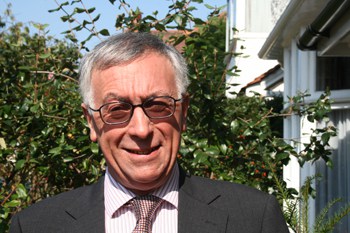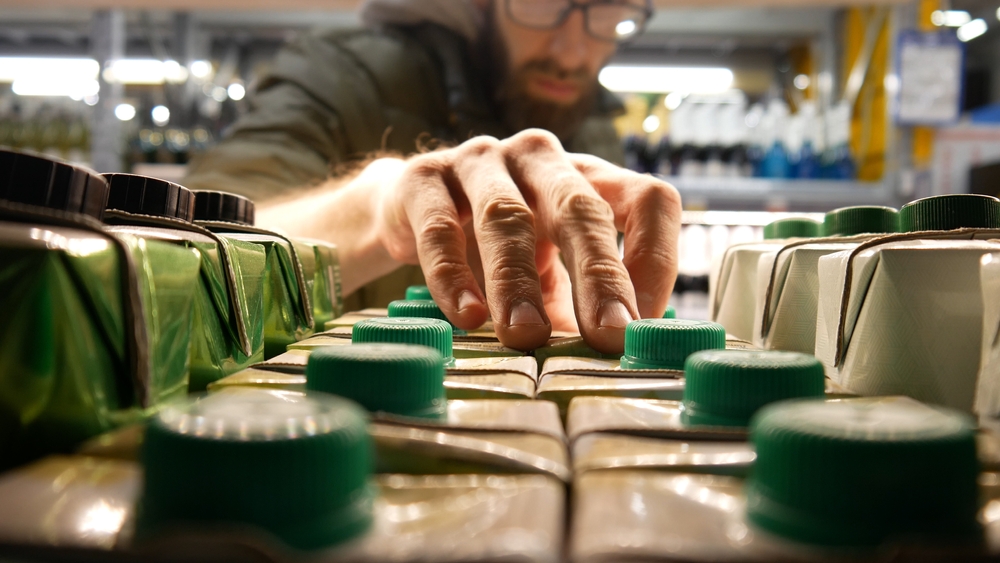It is five years since Bob Lisney OBE took the helm of the government’s Advisory Committee on Packaging, during which time the Committee has addressed a number of complex issues relating to the development of the Packaging Waste Regulations and meeting packaging recycling targets.
However, as he prepares to hand over the reins to a new chair, Mr Lisney says it is the change in public perception about packaging during his tenure of which he is most proud.

One of his first actions as chair was to set up a Packaging Optimisation Task Group involving designers, retailers and brand owners which was able to show that the UK produces amongst the lowest levels of packaging per capita in Europe. It also highlighted how packaging prevents waste and food waste in particular – something that was later picked up and communicated more widely by WRAP’s Love Food Hate Waste Campaign.
“When I was first appointed, the packaging world was not held in great esteem by the public and ministers and it was fairly under the cosh in certain elements of the media so I was keen to get us on the right track”, comments Mr Lisney.
“I managed to change the focus away from volumes to packaging function. After 18 months in the role the number of questions in parliament about packaging and stories in the media diminished. I saw that as a big success.”
The Committee, known as the ACP, is made up of representatives from different sectors affected by the Packaging Regulations and advises Defra on the regulations as well as packaging recycling from an industry perspective. It meets quarterly and has 12 members plus the chair and representatives from the devolved administrations as well as the Environment Agency and WRAP. Task groups are also set up to address specific issues.
Glass
Mr Lisney says the Committee made progress every year under his stewardship, but other notable successes include its work on materials including plastics and glass.
On the glass front, the ACP was brought in in 2013 to investigate problems in meeting glass packaging recycling targets and led to Defra revising its data and the glass target being revised downwards.
“There was a shortage of glass and we found out there was fraud and stockpiling by people holding onto PRNs until the end of the year in the hope that the price would go up”, says Mr Lisney. “We produced a report on glass which found out the actual figures we should be dealing with and the targets were revised. We were substantially helped by Valpak consultants doing a lot of work on the figures.”
[testimonial id = “111” align=”right”]
On plastics, meanwhile, Mr Lisney says the ACP did a lot of work on how to develop collections and reprocessing for different polymers, in particular film. This was something which was then picked up by WRAP as part of a much wider roadmap and is already seeing results in terms of more reprocessing infrastructure on the ground.
“There is lots of polymers requiring a very complex material recovery programme. We had a full year task group with cross sector support which met every month”, says Mr Lisney. “It was really positive. After the year we asked WRAP to finish the job and they have spent the last year drawing up a plastics roadmap and should be reporting agreed industry wide figures soon. The figures show there is substantially less plastic packaging than thought due to light-weighting, especially of film.”
PRN review
On a broader level, another important area the ACP has been working on is Defra’s review of the PRN system, although this is by no means complete. Indeed it is something which Mr Lisney says the new committee will be expected to tackle.
Explaining the rationale for the review, Mr Lisney says: “It is not looking at whether the PRN system is fit for purpose now or up to 2017 but given the proposed higher European targets for 2030 it is right to review whether the PRN market will be fit for purpose for then as substantial investment will be required. I think that is on the agenda for the next year to get ready for the longer term.”
Investment
Mr Lisney believes that achieving the long-term proposed targets will be particularly challenging under the current system given local authority budget cuts: “I don’t think local authority service levels are fit for purpose for 2030. I think councils will need to work more in partnership with producer compliance schemes and waste management companies.”
However, he is complimentary of the PRN system at present and the millions of pounds of investment it provides to effectively subsidise packaging recycling: “The PRN allows waste contractors to deliver waste services cost effectively. So I think it works at the moment. I’m not sure it will work in the same way when we have to recover half as much packaging again by 2030. We will need a review of the technology and economics by the incoming committee.”
ACP members
Throughout all his work, Mr Lisney pays credit to his colleagues at the ACP and members of the packaging industry who he says welcomed him despite him not coming from a packaging background.
Particular credit is paid to Steve Gough from Valpak, who he says was “most helpful and made Valpak’s extensive resources and information available to me” and exporter Raj Iqbal, who he says is very knowledgeable about the world economy.
Commenting on who he would like his replacement to be, Mr Lisney says: “I think it is very important not to try to replicate the way I did things. But I think it worked having an independent chair and not someone from the packaging industry. I think they might need someone that knows the industry but who keeps the debate at a strategic level, perhaps with an economics background. It is a tough world for reprocessors at the moment and it is vital to develop the sector.”
Looking forward, Mr Lisney is preparing to spend more time working in the arts and has been working for the past two years on a photography project to capture shops on East Sheen High Street.
“Photography and film are how I will try to spend some of my time. If people want short term advice I would not say no if it was interesting but I am not seeking to do executive work.”











Subscribe for free